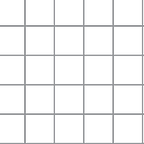“Slowing down”; storytelling in set design for theatre — 5 questions for Theun Mosk
@Interactive Storytelling Meetup #7 –14 July 2016
Interview by Klasien van de Zandschulp
Theun Mosk is an internationally acclaimed theater designer and creates settings that optimally engage audiences. At Interactive Storytelling Meetup #7 he shared with us how to stage fiction in a way it enables the immersive experiences we all crave for.
1. We were very inspired by the start of your presentation where you showed us how powerful movement (or motion) in theatre can be for the perception and experience of the visitor. Can you explain how you use movement or (slow)motion in your work to enhance the visitors experience?
“By slowing down you get more time to watch and digest, and also, you can use slowing down to create a tension. A theatre experience gives the possiblity to do that because it is always in the here and now, it is an appointment between vistor and creators for a certain amount of time. For instance in a 2 hour play you can’t say everything has the same tempo, as a theatre maker you can play with these tensions that influence the story and experience.”
>> Article in the Guardian about the piece ‘Walking’
“Set design is the frame where the story or experience exists. Primarily it connects the author with the director and the actors, and gives a frame to the audience on how to watch the performance.”
2. What is your vision on how set design in theatre can drive a story forward?
“Set design is the frame where the story or experience exists. Primarily it connects the author (if it is a text based performance like Hamlet) with the director and the actors, and gives a frame to the audience on how to watch the performance.
Secondly it gives you the opportunity to start from the space or from a material, and that is what I work with in my work with Boukje Schweigman [Walking]. The space (site-specific) or spatial concept is the starting point of our work. So there are different approaches, but I always have in mind that there is no set needed. The set can also be a decision of the designer, if it will help to initial story or concept to tell.”
3. How can light influence a story in theatre?
“With light you help the dramaturgy of the perfomance. It can be day, it can be night, you can make transitions in a play sensible on an unconscious level. Or just make a quick and clear change of scene. It helps you to travel through the piece as an audience. The lighting needs to be in the right relation to all the other disiplines like sound, set, costume and actors / dancers, to be effective. Also lighting helps to give the audience a focus. If there is no light on stage and you whisper, the audience won’t hear it; if you put little light on the person who whispers, you will hear him.”
“A theatre experience gives the possiblity to create a tension because it is always in the here and now, it is an appointment between vistor and creators for a certain amount of time.”
4. You always work in a team of theatre makers, actors, designers, etc. How does this process of collaboration work to tell a story?
“Once in a while you create a performance in a team which is 100% right. It starts for sure with a good concept and pivot of a project, for instance, the director really want to tell or research something. I experienced the power of team work with the work Angels in America which we staged 1,5 year ago, directed by Marcus Azzini at Toneelgroep Oostpool. Azzini wanted to stage this story already since he started his career like 20 years ago and the urge to do it was so presence, that everybody was really diving into it. That is a very special atmosphere, everything staples an grows to something you almost can not have questions about. If the work becomes bigger than everybody’s individual ideas, than it becomes theatre. Of course it is a matter of taste, but in general you can always feel when it when a piece is produced good, the team works great together and the puzzle comes together.”
5. Do you have a dream project that you’ve always wanted to work on in your field?
“In my field there are still a lot of things to discover. I would love to design for a large scale opera, for example for the Dutch National Opera. But what I would love to do the most = designing a building! I would love to be an architect, because theatre is always temporary. It doesn’t remain forever but it is an experience with a beginning and an ending. I would love to make something that physically stays forever.”
